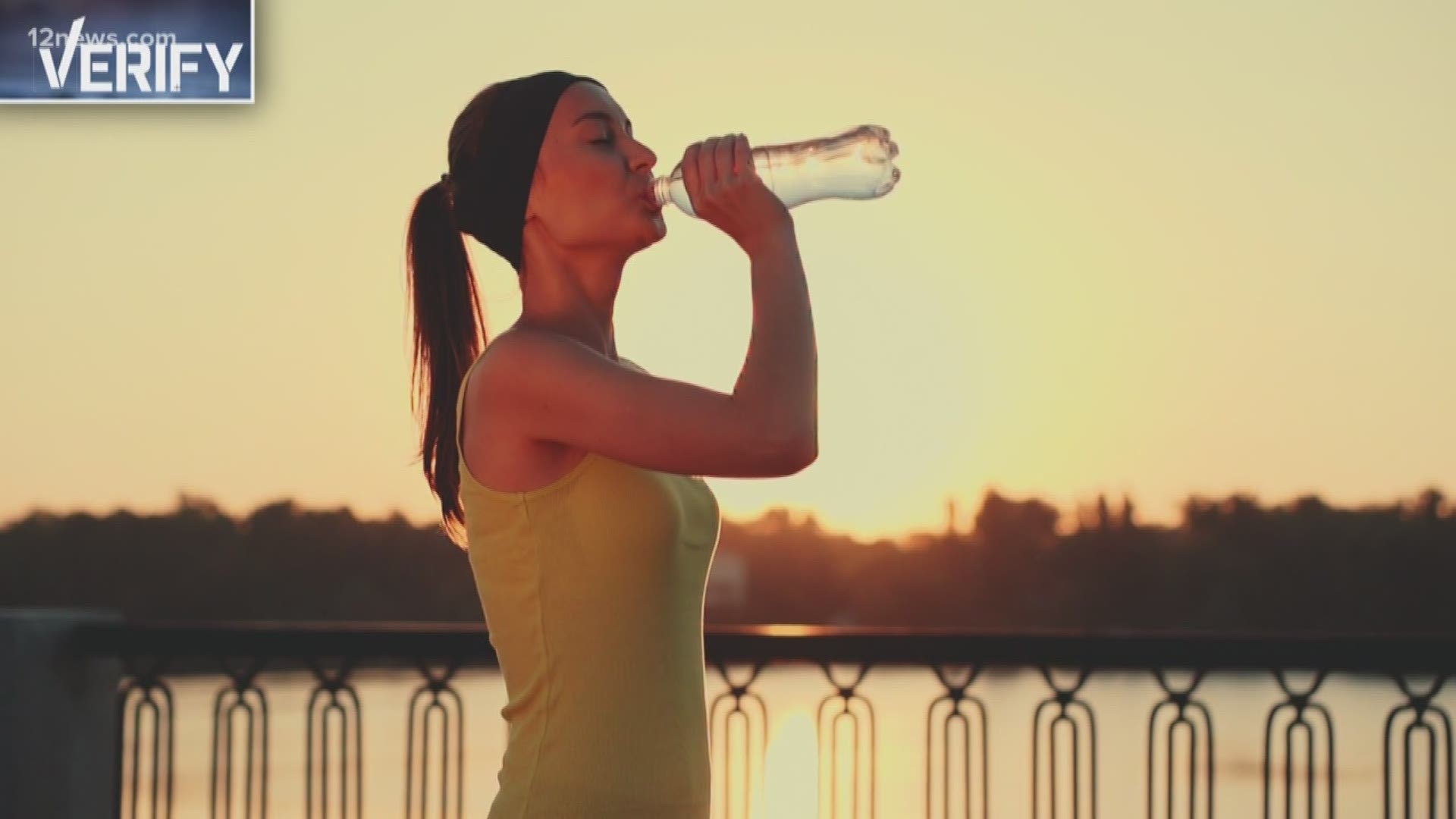PHOENIX — There’s no denying Arizona's extreme temperatures are dangerous, but do you know how to spot symptoms of heat exhaustion and heat stroke?
When it comes to heat stroke, it doesn't only happen when it’s hot.
“Heat stroke can arise at pretty much any temperature," Dr. Eric Katz, Chairman of Emergency Medicine at Maricopa Integrated Health System. "It really depends on the environment, what someone’s heat tolerance is, medical conditions, level of exertion and humidity in the air. It doesn’t boil down to one temperature or number you can use."
Before you experience heat stroke, you will first experience heat exhaustion.
“Heat exhaustion can be anything from just sweating a lot, a little bit of nausea and feeling like you are beginning to warm up," Dr. Katz said.
It’s important to take action immediately to prevent more extreme reactions.
“Heat exhaustion can be easily treated by getting out of the heat, drinking lots of water and taking steps to cool off," Dr. Katz said.
If you ignore these signs, it could lead to heat stroke.
“With heat stroke you start to get mental status changes and you stop sweating. You might become dizzy or lightheaded," said Dr. Katz.
At this point, it is now an emergency.
“You need to get the person out of the heat," Dr. Katz said. "Maybe spray them with water which could help them cool off, but at that point you need to bring them into the emergency department so we can make sure they aren't having signs of organ failure, muscle breakdown, mental status changes or any other signs that would require us to take more aggressive action."
Just because you are fit and healthy, doesn't mean you are safe from heat stroke.
“It can absolutely happen to any age, but the extremes of age are at much more risk. Patients especially on water pills and those folks are often elderly as well which gives them other reasons why they are vulnerable," Dr. Katz said.
There’s only one way to prevent it, be smart and be safe.
“Be safe up front, stay indoors, stay in places where you can cool off and especially pre-hydrate," Dr. Katz said. "Drink as much fluid as you can because by the time you feel thirsty, you are already pretty far down on your liquids, so always drink enough so the thirst isn’t bothering you."
And of course, always wear sunscreen.

